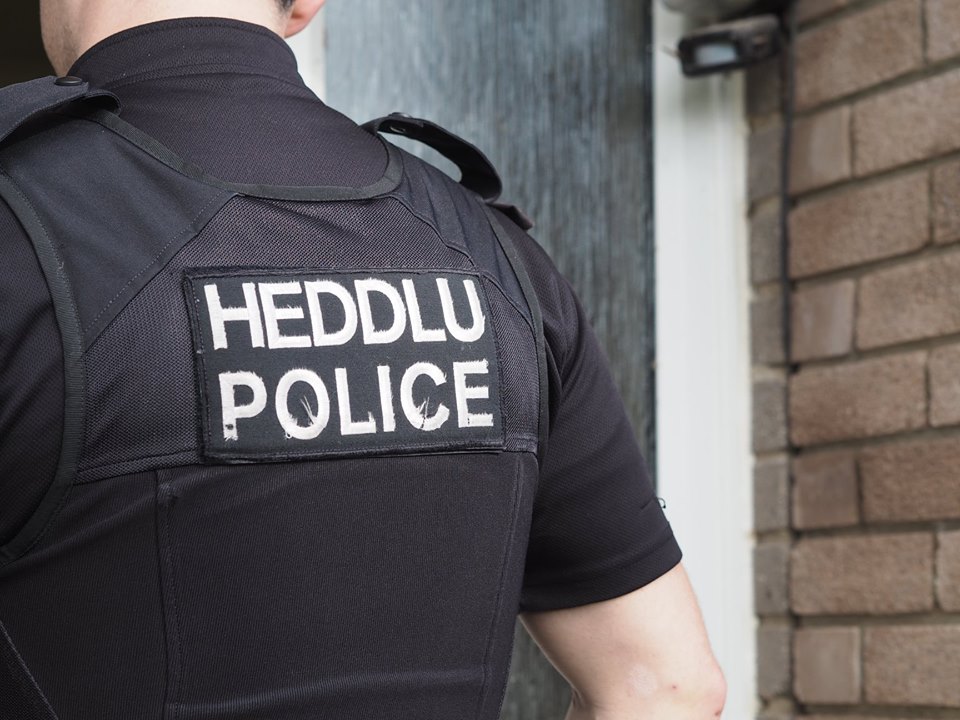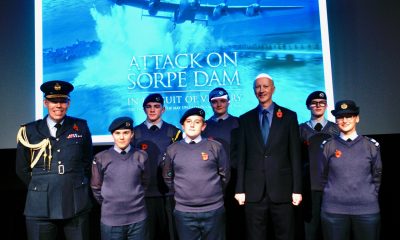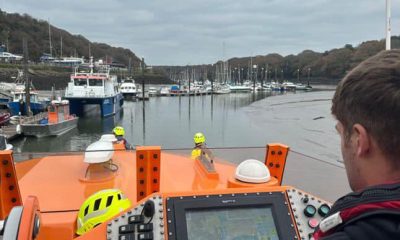News
Warning as courier fraud scammers trick people into handing over gold

SCAMMERS are continuing to target people in new ways, with victims now being asked to buy gold to hand to a courier working for the police.
Last week an elderly woman in West Wales fell victim to courier fraud after being conned into believing she was working with police to prevent fraud. She was tricked into buying £25,000 of gold and handing it over to scammers.
DC Gareth Jordan, from Dyfed-Powys Police’s cybercrime team, said the recent crimes had seen victims called by someone purporting to be a police officer from Paddington Police Station.
DC Jordan added: “The fake police officer tells them about fraudulent activity on the persons bank card, or tells them that they need to transfer money to another account due to suspicious activity.
“It is the prelude to courier fraud, where someone comes to pick up the bank card, after extracting all the details such as PIN from the victim, or getting the person to go to the bank to withdraw money that can then be collected or sometimes transferred into other accounts.”
Since October the force has received complaints of 62 courier fraud calls. Thankfully 52 of the potential victims realised it was fraud, with a further five prevented when the bank intervened.
Sadly, five people fell victim to the criminals – two handed over gold, while three gave cash.
Their total losses were £63,000.
“We are working to make bank staff to look for the tell-tale signs of this, and contacting their branch managers to ensure staff are aware,” said DC Jordan.
“We are asking PCSOs to visit banks that are open on their patch and ask bank staff to inform any customers withdrawing money or transferring money about this scam.
“This scam is often aimed at the older generation, who have a respect for the police and may fall for the story that much more readily.
“What is worrying is that it can be just the start of further fraudulent activity including phoning the victim up stating they are the bank and getting the victim to transfer money to another account in the deceitful belief that their own account is now at risk due to fraudulent bank card use. The third part is investment fraud and gold purchases.”
The three phases of courier fraud
The scam begins with a person, usually male, phones the victim pretending to be a police officer. The bogus police officer explains that the victim’s bank accounts are under threat from fraudsters.
He convinces the victim to participate in a fictitious undercover police operation to catch the fraudsters and safeguard their funds.
They are told not to inform anyone, including their bank, as bank staff are equally under suspicion. Often the bogus police officer discloses private financial information about the victim, which is used to encourage the victim to trust them.
First phase: To influence the victim, the suspect asks about his/her bank account balances and overdraft facilities in place. The victim is then instructed to withdraw a small amount of cash (depending on victim’s bank balance). Victim is instructed to hand over the cash to a courier who must confirm a password/pin number provided by the suspect. Victim is later called on the phone and told most of the cash was identified as counterfeit.
Second phase: Once the victim trusts and believes the suspects’ instructions, he/she is provided with several bank account numbers (mule accounts). Victim is instructed to move a large amount of their money (often £100,000 to £300,000) into what is purported to be “safe” accounts, which are actually the mule accounts. Often the holders of the beneficiary accounts are third parties (patsy) who are unaware of the sources of the credit in their account. The money is quickly dissipated from the beneficiary accounts into accounts outside UK jurisdiction. Monies in the beneficiary account may simply be withdrawn from any UK ATM.
Third phase: Victims are instructed to either buy gold bars or high-valued watches. Again these items are handed to a courier who confirms a password given to the victim over the phone by the suspect.
DC Jordan said the order of the phases changes from victim to victim.
He said: “The suspects invest a considerable amount of time and effort in building a rapport with the victim.
“They usually instruct the victim not to divulge any details to anyone because the ‘operation’ must remain covert. Victims are coached with a cover story for bank staff, if their transactions (unusual) are flagged by the banks safety measures.”
Please remember – and tell others . . .
- The police, or your bank, will never ask you to withdraw money or transfer it to a different account.
- Your bank will never send a courier to your home
- Your bank and the police will never collect your bank card
- Your bank and the police will never ask you to reveal your full banking password or PIN
- If you receive one of these calls, end it immediately
- Do not click on links or attachments in unexpected or suspicious texts or emails.
- Confirm requests are genuine by using a known number or email address to contact organisations directly.
If you think you, or someone you know, may have been targeted by scammers, please report it to us online:
https://www.dyfed-powys.police.uk/en/contact-us/report-an-incident/, by email [email protected] or call 101.
Always call 999 if you feel you are in immediate harm or danger.
Crime
Mother admits to killing seven-year-old son in Haverfordwest

A mother has admitted to the manslaughter of her seven-year-old son at their home in Haverfordwest, citing diminished responsibility.
Papaipit Linse, 43, appeared at Swansea Crown Court on Friday (Nov 22), where she denied murder but pleaded guilty to manslaughter in connection with the death of her son, Louis Linse. Prosecutor Caroline Rees KC confirmed the manslaughter plea would be accepted, stating it “did not come as a surprise” to the prosecution.
The incident occurred on 10 January when police were called to a property on Upper Market Street. Louis was rushed to Withybush General Hospital but tragically died shortly afterwards.
During the hearing, Linse, who spoke only to confirm her name and enter her pleas, was informed that she would be sentenced on 13 December. Judge Paul Thomas KC described the case as “clearly a very sensitive as well as a very tragic case.”
The court was told that Linse is currently receiving treatment at the Caswell Clinic, a mental health facility in Bridgend. Psychiatric evidence is expected to be presented during the sentencing hearing to provide further insight into the circumstances surrounding the case.
Community
Council warns of icy conditions as temperatures drop

ROAD users in Pembrokeshire are being urged to exercise caution tonight as temperatures are forecast to dip below freezing.
Pembrokeshire County Council has announced that road surface temperatures could reach as low as -2°C, with the possibility of sleet or snow on higher ground. In response, precautionary salting of the county’s primary routes will be carried out this evening and overnight.
A spokesperson for the council said: “Road users are advised to take care if travelling on untreated roads.”
Motorists are reminded to plan ahead and drive carefully, particularly in areas that may not have been treated.
Stay tuned to The Herald for updates on road conditions and weather warnings.
Community
Stallholders wanted for Milford Haven Christmas Market

MILFORD HAVEN BUSINESS CIRCLE is calling for stallholders to join the town’s festive Christmas Market, set to bring holiday cheer on Friday, December 6, and Saturday, December 7, 2024.
The market will take place at the Lower Charles Street Car Park, promising a vibrant mix of stalls and attractions. Organizers are seeking a variety of vendors, including those offering gifts, children’s toys and games, food, cakes, flowers, and more.
There’s also an open invitation for someone with small children’s rides to add to the festive fun. A highlight of the event will be the Grinch’s Grotto, offering an entertaining twist to this year’s celebrations.
If you’re interested in having a stall, contact the Milford Haven Business Circle via email at [email protected] for more information.
Mark your calendars and join the excitement as Milford Haven celebrates the season in style!

-

 Business2 days ago
Business2 days agoSpecsavers relocates to landmark new store following £1.2 million investment
-

 Crime4 days ago
Crime4 days agoPembroke man faces rape and sexual assault charges
-

 Community6 days ago
Community6 days agoSpecial guests for Torch showing of ‘Attack on Sorpe Dam’
-

 Community3 days ago
Community3 days agoWaldo Lounge in Haverfordwest is now officially open!
-

 News3 days ago
News3 days agoA tribute to Honey Arteya Foxx French, written by her family
-

 Top News5 days ago
Top News5 days agoPembrokeshire’s ‘coal king’ lifts one of world’s oldest 127 kg lifting stones
-

 News5 days ago
News5 days agoPolice appeal after Nerf gun bullet hit baby
-

 Farming7 days ago
Farming7 days agoFarmers fight back: Inheritance tax row at Welsh Labour conference


























